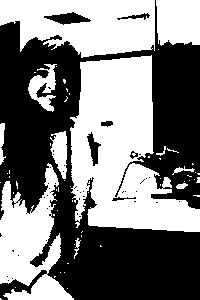In response to a national shortage of qualified high school physics teachers, Bowdoin’s physics department has teamed up with the education department to create a new major that prepares students to teach physics in secondary schools.
“The point was to make this a more visible and supported career pathway,” Karen Topp said. Topp, a senior lecturer in physics and astronomy, said she started working with her colleagues about three years ago to launch the new interdisciplinary major when she realized the extent of the national teacher shortage — and saw the effects of it in her classes.
“Only 47 percent of high school physics classes [in the United States] are taught by a teacher with a degree in the discipline,” Topp said. “A lot of the students coming into physics at Bowdoin are not only unprepared, but they also don’t like physics because they had a bad experience in high school.” She surmises that students might get poor first impressions of the subject when they take a high school physics class taught by a biology, chemistry or geology teacher. “Too often, the high school teachers themselves didn’t like or understand physics,” Topp said.
Last year, Topp received a grant from the Physics Teacher Education Coalition to support the recruitment and retention of Bowdoin students interested in becoming qualified high school physics teachers. “The natural first step seemed to be to create this new interdisciplinary major,” Topp said. “I realized this is a good way to focus some of our students who want to give back to the community, and who would enjoy interacting with kids and teaching,” she added.
Currently, it’s possible for Bowdoin students to major in physics and minor in education. The new interdisciplinary major makes it slightly easier for students to pursue this path by reducing the physics course load for majors by one class. More importantly, according to Topp, it presents a clear, navigable way through both departments to a joint major. “It might draw people who want to do physics but who don’t want to do the grad school or research path,” Topp added. “It’s a good alternative, and gives them appropriate skills and experience.”
The interdisciplinary physics and education major requires 11 courses in total — five physics classes and a class each in chemistry and earth and oceanographic science. It also requires four education courses, which fill all the course prerequisites for students to apply to the Bowdoin Teacher Scholars program. The BTS program prepares recent graduates or Bowdoin seniors to become public school teachers. “Once students successfully complete the BTS program, we recommend them to the state for certification. At that point, they receive their state of Maine certification, which is reciprocal with the other 49 states and (Washington, D.C.), so they can get an initial teacher certification anywhere in the U.S.,” Associate Professor of Education Chuck Dorn said.
Nine years ago, the math department at Bowdoin also created an interdisciplinary math and education major. Professor of Mathematics Jennifer Taback said the interdisciplinary major has drawn more students into the math major, which is currently the third most popular major at Bowdoin.
Roya Moussapour ’17 is majoring in physics and minoring in teaching. While she’s not yet certain about her professional calling, she said she is studying both disciplines so that if she does teach, she has a strong academic background in both areas. “If I do eventually end up teaching physics, my main motive would be to instill an interest in the STEM [science, technology, engineering and math] disciplines for students who otherwise might shy away from them and show students how physics and other STEM subjects can open up a wide variety of opportunities in academia and other fields,” Moussapour said.


